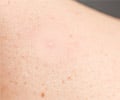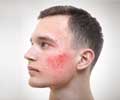Teenagers are wiling to spend nearly 275 dollars to have never had acne, and even more to be acne-free than to have 50 percent clearance of their acne or to have clear skin with acne
A new study shows that US teens are willing to spend nearly 275 dollars to have never have acne, and even more to be acne-free than to have 50 percent clearance of their acne or to have clear skin with acne scars.
According to the authors, acne has been associated with anxiety, depression, embarrassment and social dysfunction."Reducing the psychosocial impact of acne is considered one of the guiding principles for its clinical management and it is important to measure and evaluate this impact," the authors write.
Lead researcher Dr Cynthia L. Chen, at the University of California, San Francisco examined 266 teen volunteers with acne from four public high schools in San Francisco.
The participants completed written surveys regarding how much of their lifetime they would give up or how much money they would pay to have never had acne, to be 100-percent acne-free from then on, to have 100-percent acne clearance but with visible scarring or to have 50-percent acne clearance.
They and their parents also were asked about acne history and severity, and parents were asked about their willingness to pay since they typically bear the cost of their children's acne treatment.
The study showed that the teens were willing to pay a median of 275 dollars to have never had acne, 100 dollars to be 100-percent cleared of acne, 10 dollars for 50-percent clearance and zero for 100-percent clearance with scarring.
Advertisement
Adolescents who rated their acne as more severe reported a willingness to trade more time and money for acne clearance than those with less severe acne.
Advertisement
"Randomized, blinded, placebo-controlled trials have shown that three to four months of conventional acne therapy, including topical benzoyl peroxide, topical retinoids and oral antibiotics, typically produces reductions in lesion counts in the 40 percent to 60 percent range," they added.
The study appears in August issue of Archives of Dermatology, one of the JAMA/Archives journals.
Source-ANI
RAS/L















